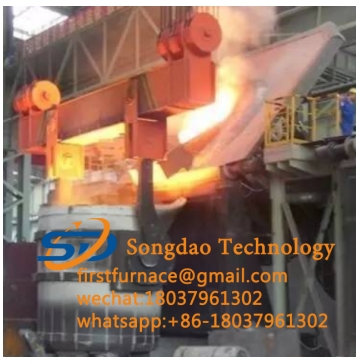- 10
- May
What are the types of induction furnace lining materials?
の種類は何ですか 誘導炉 lining materials?
Induction furnace lining material is also called induction furnace refractory material, induction furnace dry vibrating material, induction furnace knotting material, induction furnace ramming material, divided into acidic, neutral, and alkaline lining materials. The acidic lining material is made of high-purity quartz, molten Quartz is the main raw material, composite additives are used as the sintering agent; the neutral furnace lining material is made of alumina and high aluminum materials as the main raw material, and the composite additive is used as the sintering agent; the basic furnace lining material is made of high-purity fused corundum and high-purity electric Fused magnesia and high-purity spinel are used as main raw materials, and composite additives are used as sintering agents.
There are three kinds of induction furnace lining materials. One is acidic lining, which is formed by dry ramming of quartz sand, and the bonding agent is borax or boric acid; the other is dry ramming and molding of magnesia, and the bonding agent is also borax or boric acid. One is a neutral furnace lining, which is rammed and formed from high alumina bauxite clinker. In recent years, with the development of technology and the emergence of various new materials, many new lining materials have also appeared in induction furnace lining materials.
1. Acid lining
Acidic furnace lining is mainly quartz sand, which is cheap, widely distributed, good insulation, low construction requirements, few defects during use, and relatively stable production. However, quartz sand has low refractoriness and cannot meet the requirements for large-scale induction furnaces. And there is a secondary phase change during the heating process, the standard stability is poor, the chemical stability is not ideal, and it simply reacts with the slag to form corrosion. In order to prevent these defects, fused quartz can be used. Its content is high, the content of silicon dioxide is greater than 99%, the refractoriness advances significantly, close to the melting point, and there is no secondary phase change when heating up, there is no heating standard change, and thermal shock is stable. Sex has also advanced greatly.
2. Neutral lining
The fused corundum is used as the lining of the induction furnace. Because the melting point of white corundum is as high as 2050℃, the hardness is as high as 8. It is wear-resistant, high-temperature resistant, and has better chemical stability than quartz. Suitable for high temperature cast steel or large furnace lining. The characteristic is that it also has the defects of phase change and large thermal expansion coefficient. In practice, the participation of spinel powder can significantly advance the corrosion resistance and standard stability.
3. Alkaline lining
The traditional alkaline furnace lining is formed by dry ramming of magnesia. The advantage is high refractoriness, close to 2800℃, the defect is that the expansion coefficient is large, easy to crack, the magnesia lining is corrosion resistant, long life, low price, and it is widely used. Participating in white corundum powder or spinel powder significantly advances the service life.
4. Spinel lining
Spinel lining is a new type of lining material. It is molded from alumina and magnesia, fired at high temperature or preformed into spinel by electric fusion, and then produced various particle standards as required. It is used as an induction furnace lining, and the bonding agent is still Choosing borax or boric acid has the advantages of white corundum furnace lining and magnesia furnace lining, while preventing its defects. It is the development direction of large-scale induction furnace lining and high-temperature furnace lining. Many imported furnace lining materials belong to this type.
5. New technology and new materials of furnace lining materials
① Participate in ultra-fine powder (mostly in a few microns) in traditional furnace lining materials, which can improve the corrosion resistance and thermal shock stability of furnace lining materials, such as silica micro powder, alumina micro powder, white corundum micro powder, spinel micro powder, etc.
②Dry molding. Traditional furnace linings are all formed by dry powder and dry ramming. The defect is that it is easy to chromatograph and constitute defects such as empty. In the semi-dry method, 2% to 3% water mixing is used to reduce chromatography, and the integrity is good, and it will not pose too much harm. It only needs a little longer in the low-temperature oven.
③The semi-dry molding process participates in pure calcium aluminate cement, with pure acidic or neutral furnace lining; while in alkaline furnace lining, it participates in magnesium oxide, sodium hexametaphosphate, etc.

